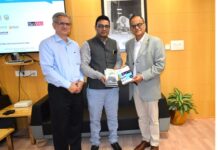New Delhi: Trauma, disease and aging process can lead to critical defects in various organs which cannot be regenerated by itself. The resultant loss of anatomical shape and function can be life threatening.
Tissue engineering seeks to achieve functional restoration of these defects by using a variety of factors, such as biomaterials, cells, bioactive molecules, bioreactors. The conventional approach includes the fabrication of a scaffold followed by seeding of cells onto these scaffolds growing them in laboratory and then transferring it to the patients.
Based on these understanding, the group comprising Mr Sumit Murab, Ms Priyanka Dubey, Ms Shikha Chawla, Mr Shibu C. under Prof Sourabh Ghosh from Department of Textile Technology at IIT-Delhi are working to generate cellular grafts based on autologous cells and porous 3D scaffolds to repair cartilage, bone and muscle tissues, as well as complex tissue interfaces.
Scaffolds of wide varieties of 3D architectures and mechanical properties are being designed by using concepts of Textile technology like knitting, weaving, nonwoven and braiding. Aside from scaffold and appropriate cell source, environmental inputs – such as appropriate biomechanical forces, hydrodynamic fluid transport of nutrients and metabolic waste products and growth factors, are considered to develop in vitro engineered tissue constructs.

































































